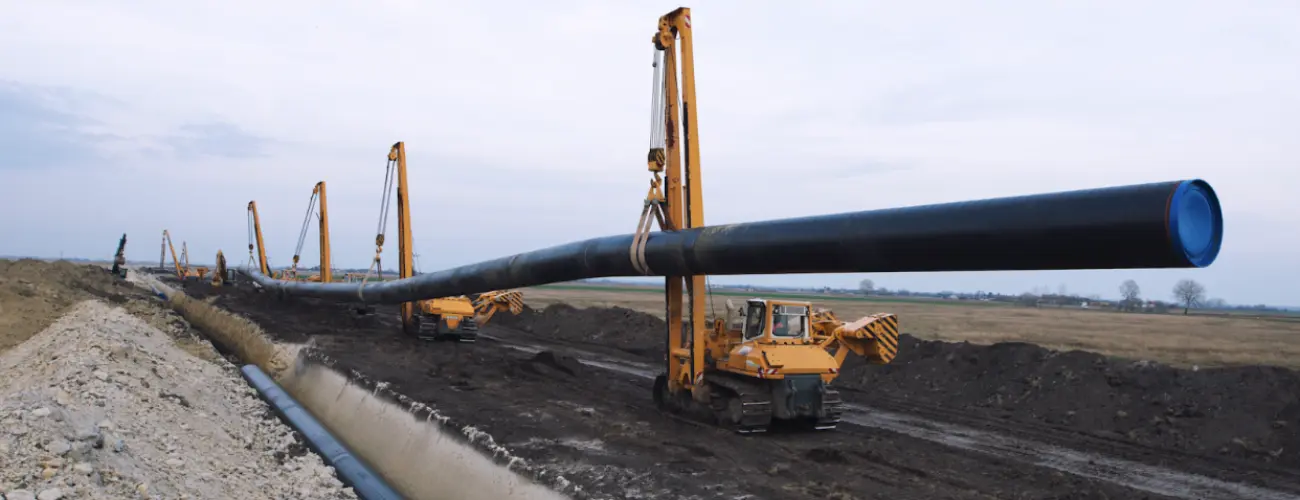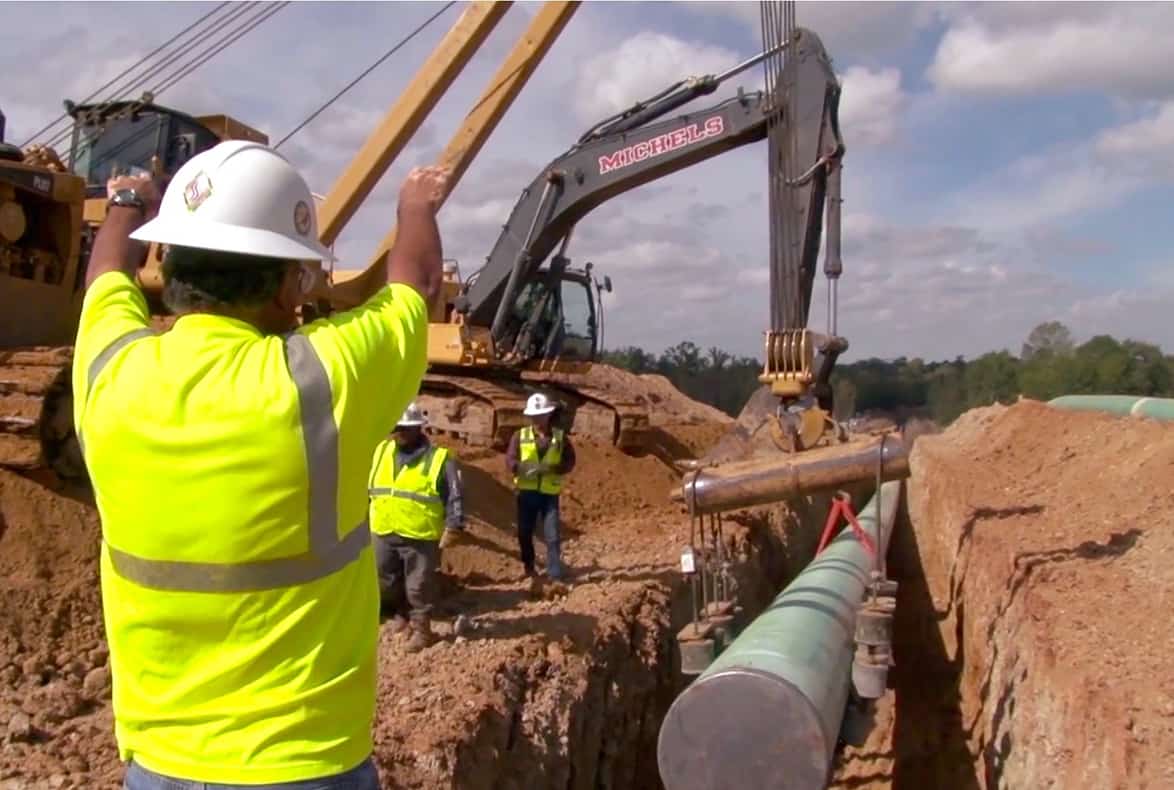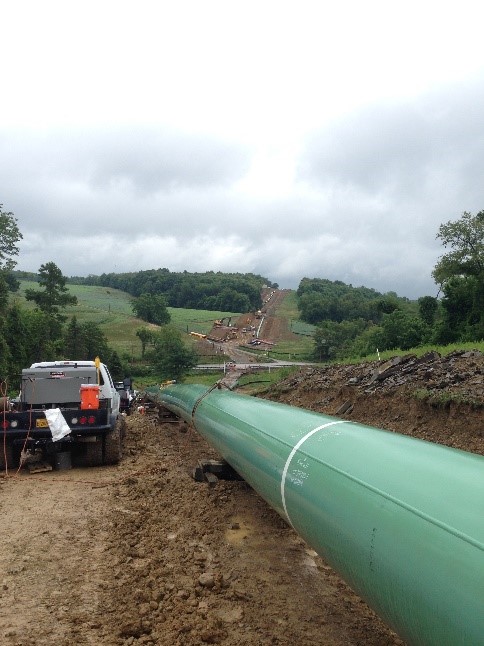Why You Should Consider Underground Work With Creek Pipe trenching services
Wiki Article
Recognizing the Basics of Pipes Installation: What You Required to Find Out About the Refine
Proper pipe installation is essential for any pipes system. It needs careful factor to consider of different elements, consisting of product selection and adherence to neighborhood laws. A tactical format can prevent concerns like pressure loss, while the right devices assure efficient joining strategies. Nonetheless, also experienced installers can make usual errors. Understanding these basics can result in a more efficient and long lasting system, prompting a closer check out the crucial elements associated with the procedure.Choosing the Right Products for Pipe Installation
When thinking about pipe installation, the choice of suitable products is important to making sure resilience and performance. Numerous products are available, each offering distinct benefits and factors to consider. For instance, PVC pipelines are light-weight, resistant to corrosion, and affordable, making them optimal for property pipes. Conversely, copper pipes, recognized for their long life and capacity to withstand heats, are usually liked for home heating systems.Additionally, galvanized steel pipelines supply stamina and sturdiness, ideal for heavy-duty applications, although they are prone to rust over time.For below ground installments, polyethylene pipelines are preferred due to their adaptability and resistance to anxiety breaking. Proper product choice depends upon the certain needs of the job, consisting of pressure ratings, temperature variations, and the chemical nature of the liquids being transported - Creek Pipe Company. Ultimately, informed choices relating to pipe materials add substantially to the total success and durability of plumbing systemsUnderstanding Local Building Ordinance and Laws
Just how can understanding local building ordinance and policies impact pipe installation? Knowledge with these codes is vital for ensuring that pipe installments are risk-free, certified, and reliable. Neighborhood building codes describe certain demands relating to materials, installation techniques, and precaution, which need to be stuck to in order to avoid prospective legal concerns and costly fines.Failure to conform can bring about inspections being fallen short, delays in job completion, and even mandated removal of improperly installed pipelines. Furthermore, understanding zoning legislations and policies can influence the type of products enabled, along with the approaches made use of for installation.Contractors and homeowners alike should invest time in assessing neighborhood policies prior to starting any installation project. This positive strategy not just promotes safety and security but likewise improves the total high quality and sturdiness of the pipes system, inevitably fostering long-lasting performance and fulfillment.Preparation Your Pipe Layout and Style
Correct planning of pipe format and layout is essential for accomplishing a reliable plumbing system. This process starts with assessing the specific demands of the area, taking into account the location of fixtures and devices. Accurate measurements assure that pipes are correctly routed, decreasing bends and transforms that can cause pressure loss.Consideration of the circulation rates and the types of materials utilized is critical, as various products have differing durability and compatibility with plumbing systems. Furthermore, the designer should make up future developments or alterations to the layout, permitting adaptability in case of renovations.Efficient water drainage and air flow are likewise substantial components of the layout, as they prevent clogs and assure appropriate waste elimination. Finally, cooperation with neighborhood building regulations guarantees compliance and security, which is paramount in any pipes installation job.Crucial Tools and Equipment for Installation
Successful pipe installation rests on having the right tools and tools at hand. Necessary tools consist of pipe cutters for tidy cuts, wrenches for tightening fittings, and pliers for gripping and turning pipelines. Additionally, a level warranties pipes are set up evenly, while a measuring tape help in achieving precise lengths.For particular products, a blowpipe may be necessary for copper pipes, while a PVC cutter is essential for plastic choices. Safety equipment, such as handwear covers and safety glasses, shields installers from potential hazards during the process.A pipeline bender can be particularly useful for developing smooth curves without endangering integrity, while a torque wrench warranties that links are safeguarded to the maker's specifications.Having these tools easily offered not only facilitates a smoother installation process but likewise adds to the overall sturdiness and functionality of the plumbing system. Appropriate equipment is important in accomplishing resilient results.Strategies for Appropriate Pipe Joining and Sealing
Accomplishing a protected and leak-free connection between pipes needs cautious interest to joining and securing techniques. Different techniques exist, each matched to various pipe products and applications (Creek Pipe HDPE installation). Welding is frequently used for metal pipes, guaranteeing robust links with heat blend. On the other hand, plastic pipes gain from solvent concrete or combination welding, developing strong, long-term bonds.Threaded links are usual in both metal and plastic piping, needing precise alignment and the use of ideal sealants, such as Teflon tape or pipe dope, to protect against leaks. Compression installations use an additional option, where mechanical stress safeguards the pipes with each other, making them easily disassembled for maintenance.Regardless of the technique picked, appropriate preparation is necessary. This includes cleaning pipe ends and guaranteeing they are complimentary from debris. Executing these techniques carefully will boost the longevity and reliability of the pipe system, eventually adding to its effective efficiencyTypical Blunders to Prevent Throughout Installation
Throughout pipe installation, avoiding common errors is essential for making sure a reliable and reliable system. One frequent mistake is stopping working to gauge and reduce pipelines precisely, which can cause improper fittings and leaks. Additionally, overlooking to inspect the compatibility of products can lead to deterioration or various other damages gradually. Incorrectly safeguarding joints and links can additionally develop weak factors in the system, triggering potential failures.Another common mistake is neglecting the significance of slope and drain; pipes should be installed at the correct angle to facilitate proper flow. Poor assistance for pipelines can result in sagging and stress and anxiety, affecting the honesty of the system. Inevitably, neglecting regional codes and guidelines can lead to expensive rework and safety threats. By recognizing these risks, installers can considerably improve the longevity and efficiency of pipe systems.Upkeep Tips for Lasting Pipe Equipments
To ensure the long life of pipe systems, regular assessments and cleaning are necessary practices. These procedures help determine possible issues prior to they rise into major troubles. Additionally, using proper insulation methods can additionally protect pipes from temperature level changes and environmental elements.Routine Inspections and Cleaning Up
Normal assessments and cleaning are vital for preserving the longevity and performance of pipe systems. Routinely taking a look at pipelines for indicators of corrosion, leaks, or obstructions can help identify potential concerns prior to they intensify right into pricey repair work. Cleansing pipes regularly removes accumulation that can limit flow and promote degeneration. It is recommended to arrange assessments a minimum of when a year, yet extra constant checks might be essential in high-usage settings. Utilizing expert services for complete cleaning assurances that all debris is efficiently removed. Additionally, keeping records of inspections and upkeep activities help in tracking the system's wellness gradually - Creek Pipe trenching services. By focusing on these methods, homeowner can improve the dependability and lifespan of their pipe systemsCorrect Insulation Strategies
Effective insulation techniques play a necessary function in maintaining the performance and long life of pipe systems. Creek Pipe HDPE installation Appropriate insulation minimizes warmth loss in hot water pipes and stops freezing in cool water pipes, considerably lowering energy expenses and potential damages. Common products utilized for insulation include fiberglass, foam, and rubber, each offering varying degrees of thermal resistance. It is vital to assure that insulation is applied evenly, covering all exposed locations without spaces. In addition, protecting insulation with suitable fasteners aids maintain its setting and effectiveness gradually. Regular inspections must be conducted to determine damage, assuring timely substitutes. By executing these strategies, pipe systems can operate effectively and have a prolonged life span, ultimately profiting both the setting and the property owner.
Regularly Asked Inquiries
Exactly how Do I Figure Out the Appropriate Pipe Dimension for My Task?
Establishing the appropriate pipe size includes assessing the job's circulation needs, stress requirements, and the sort of fluid being transferred. Consulting style criteria and performing estimations warranties perfect performance and efficiency in the installation process.What Are the Environmental Effects of Various Pipe Materials?

Can I Mount Pipes Myself or Should I Hire a Professional?
The question of whether to set up pipelines independently or work with a specialist often depends on the individual's skill degree and project complexity. A professional might assure conformity with guidelines and lower potential long-lasting issues.
How Long Can I Expect My Pipe Installation to Last?
The longevity of pipe installation varies significantly, commonly lasting 20 to 100 years, relying on products, installation top quality, and upkeep. Routine examinations and proper treatment can boost longevity and protect against early failures.
What Are the Indicators of a Failing Pipe System?
Indicators of a stopping working pipe system consist of constant leakages, uncommon water pressure modifications, stained water, mold development, and consistent moisture. Property owners ought to keep track of these indications to stay clear of pricey damages and assurance timely repair work are made.Report this wiki page